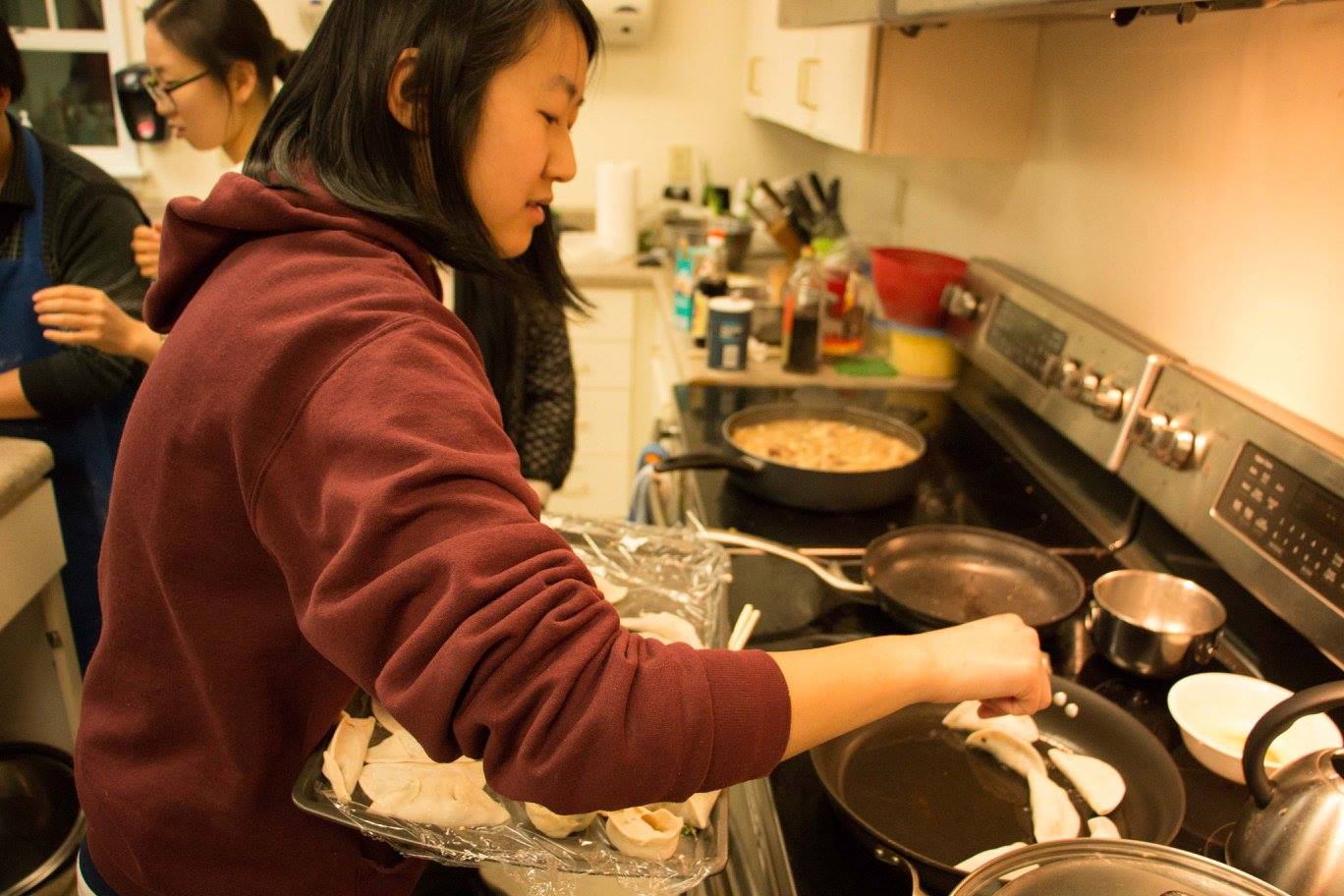Susan Chen talks trash: Food waste is an enormous problem
The following story was written in April 2019 by Kaitlyn Britt in ENGL 4824: Science Writing as part of a collaboration between the English department and the Center for Communicating Science.

I try to eat everything on my plate, but I don’t always finish my food. I think that most of us don’t. Until I met Susan Chen, a graduate student in the Human, Nutrition, Foods and Exercise (HNFE) Department at Virginia Tech, I thought that since food is biodegradable, it wasn’t as bad to throw away as plastic.
Chen taught me that this food I leave on my plate is food waste. She studies how food is wasted and what we can do to prevent it.
You might be wondering what exactly food waste is. So was I.
“Food waste is basically any food that is edible, that was intended for us to consume, but we don’t consume it for whatever reason,” explains Chen. “So this could be because we don’t like the food, maybe the food looks kind of weird. . .We [as individuals] are responsible for most of the food waste in the United States,” says Chen.
How does this impact each of us?
For individuals, “Every year you throw out an average of $550 per year,” says Chen. That can really add up. But food waste doesn’t just impact our wallets. We have to think about where food comes from to really understand the problem. When we throw away food, we are throwing away resources like time, money, labor, and nutrients.
Food waste has global impacts, too.
“If you step back and look at food waste in the grand scheme of things, it does contribute to climate change, almost directly. If you throw out food, it will almost always end up in the landfill. Rarely will the food be recycled and used as compost or feed for animals,” says Chen.
What can each of us do to waste less food?
“Education actually holds one of the highest potentials for decreasing food waste, because if you are aware of it then you will make a conscious effort to stop wasting food at home or wherever,” says Chen.
This starts in our homes. But if we can develop greener grocery stores in addition to changes at home, we can cut down on packaging waste and food waste.
“Whenever you think about food waste you have to think about packaging,” says Chen. All of the food we buy comes wrapped or bagged. A dilemma in food waste is that by creating smaller portions, we create less food waste; however, by doing that we increase the amount of packaging we use and consequently the amount of trash.
“If we were to have more bulk stores (like Eats and Annie K’s), they are very environmentally friendly. . .They will have bins of flour and you can weigh out your own flour or you weigh out your own rice. I would like to see that more because if I could go to the store and pick up a couple sprigs of cilantro, I’m not going to be as wasteful,” says Chen.
Sometimes packaging is not the enemy, though. For a while home delivery kits like Hello Fresh were under fire for their excessive packaging.
“[Researchers] found that those models decrease food waste at home, because all of the food is portioned to however much you need. So you will use all of it,” says Chen. “. . .but the packaging from these can be recycled and food waste is not easily recycled.”
Now Chen is studying waste in food pantries. Food pantries can reduce waste by taking in leftover foods from supermarkets and other sources--but they can contribute to waste when they have to throw away food that is rotten or expired.

“I am still on the topic of food waste, but I am looking at food waste at food recovery places-- this would be like food banks or food pantries and how they take in the food waste,” Susan explains.
In my mind, food banks are a place of repurposing and reducing waste, and I ask Chen about that.
“There are no studies to say that [food waste] definitely does” occur at food banks and pantries, Chen says, but “when you talk to food pantry workers, they say yes it does happen, yes, we throw away a lot of things.”
“When most things get to a food bank, it’s almost at the end of its life. If it’s fruits or vegetables maybe they only have one or two days left before it’s actually bad, but you could still eat it,” says Chen.
Chen is interested in a number of questions: Why does food waste happen there? What sort of a program might help [food banks] reduce food waste? As she continues her research, she will find answers.


